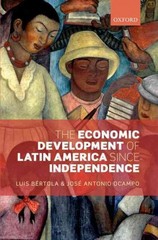Question
2.A typical indifference curve... A.shows that as a consumer has more of a good he or she is less willing to exchange it for one
2.A typical indifference curve...
A.shows that as a consumer has more of a good he or she is less willing to exchange it for one unit of another good.
B.shows all combinations of goods that give a consumer the same level of utility.
C.shifts out if income increases.
D.both b and c
9.Along an indifference curve
A.the ratio of the marginal utilities is constant.
B.the MRS is constant.
C.the price ratio is constant.
D.None of the above
12.If a consumer is choosing the bundle of goods that maximizes utility subject to a budget constraint, then the
A.rate at which the consumer is willing to substitute between goods is equal to the
market rate of exchange between goods.
B.rate at which income affects the utility-maximizing choice is equal for all goods.
C.ratio of marginal utility to price is equal for all goods.
D.both A and C
17.Why doesn't the consumer choose the combination at point B?
A.The marginal utility of Y exceeds the marginal utility of X.
B.The consumer is willing to give up more X for an additional unit of Y than must be given up given the relative prices of X and Y.
C.The marginal utility per dollar spent on Y exceeds the marginal utility per dollar spent on X.
D.both B and C
18.If the price of a good decreases, the substitution effect:
A.is positive since the quantity of the good increases.
B.shows the increase in the quantity of the good demanded, holding income
constant.
C.must be greater than the income effect.
D.shows the increase in the quantity of the good demanded, holding utility constant.
19.If the price of a good increases, the income effect:
A. reinforces the substitution effect if the good is normal.
B.offsets the substitution effect if the good is inferior.
C.shows the change in the quantity demanded of the good, income held constant.
D.A and B


Step by Step Solution
There are 3 Steps involved in it
Step: 1

Get Instant Access to Expert-Tailored Solutions
See step-by-step solutions with expert insights and AI powered tools for academic success
Step: 2

Step: 3

Ace Your Homework with AI
Get the answers you need in no time with our AI-driven, step-by-step assistance
Get Started


